Quebec is an almost ancient city (by US standards), occupying a strategic site overlooking the St Lawrence Seaway. French speaking and foreign feeling, it is home to some of the finest cuisine in all of North America.
It was a cool, bright day, and our bi-lingual guide asked if we were interested in seeing something somewhat off the beaten path. He took us to Montmorency Falls, barely more than 10 or 12km from the heart of Quebec City. Glad he did, too. The leaves were changing as Fall approached, treating us to a spectacular splash of color all along the river.

The Falls, higher than Niagara, spill over and empty into the Saint Lawrence River, one of the most important river ways on the North American Continent.
*******************************************
Further East, out in the Atlantic Ocean, are the three provinces that make up the Canadian Maritimes. Nova Scotia is here, and its provincial capitol, Halifax, is a bustling town that is pure fun to explore. We ventured out our first afternoon along the recently rebuilt wharf, stopping to watch the children scrambling over a thoughtfully placed tugboat.
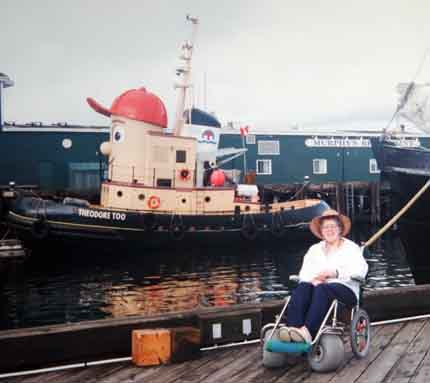
There are several places of special interest in the Halifax area. One is the particularly scenic town of Peggys Cove, an easy half hour or so drive from Halifax.
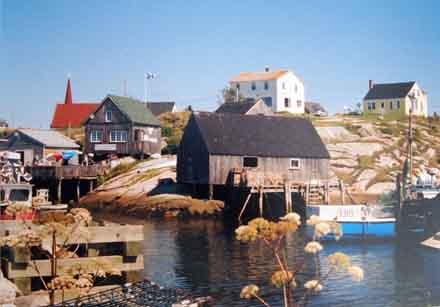
The idyllic town (population: a hundred or so) has one or two tourist trap joints, but is not overwhelmed by them to the point where they distract you. It is sheer delight to meander through the place, taking in the casual lifestyle. Of special interest is the Peggys Cove Lighthouse.
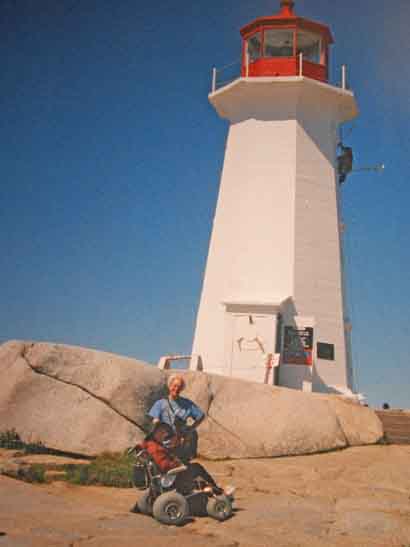
Built in 1868, the lighthouse (which does not lean like shown here) is built on a rock pile of especially large, photogenic, but inaccessible boulders. We were not able to get closer than you see here, but it was worth the effort to get this far. The lighthouse contains an official post office, where you can purchase special memorial stamps and letters.
Also of note in the area are the graveyards of the Titanic disaster. The Titanic sank in 1912, and the closest area to mount rescue and salvage operations was Halifax. We visited to graveyard to pay our respects to those who went down with the ship.

One hundred twenty one victims are buried here in Fairview Lawn Cemetery. More are buried in the Mount Olivet Catholic Cemetery, and more yet in the Baron de Hirsch Jewish Cemetery.
Forty four of the bodies were never identified. The grave markers seen in this photo carry no names, just date and order in which the body was recovered.
There is one particularly poignant marker in the graveyard- dedicated to an unknown child- representing unidentified children everywhere. We saw several families at this grave site, and you could feel the special bond between parent and child as they stood before this monument.

There is also a most interesting museum in Halifax, the Maritime Museum of the Atlantic, which is well worth your time for a visit.
******************************************
Sprinkled throughout the provinces are a number of small towns, all French, all of individual dialects, that have been close knit fishing communities for centuries. This one, Baddeck, is typical
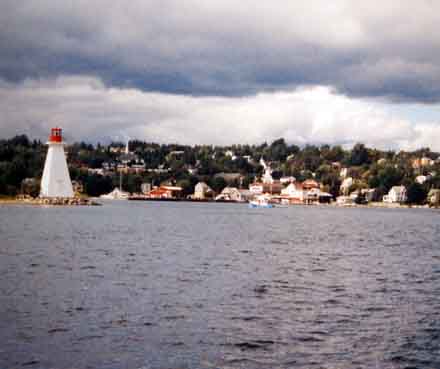
Alexander Graham Bell, the inventor of the telephone, had a summer home here on Cape Breton Island, Nova Scotia, overlooking Bras d'Or Lake.
As was befitting for a man of his wealth and stature, he kept a serious yacht, Elsie, on the lake. We were offered a chance to sail on her- and we grabbed it!
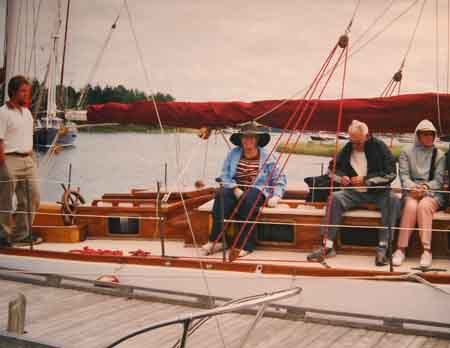
Before her strokes, Nancy, I, and our family would sail in the Chesapeake Bay, which was not too far from our home outside Washington, DC. Nancy was afraid of boarding the boat then, but this time she got aboard with no trouble. Of course, Bell's yacht was much, much larger than anything we sailed!
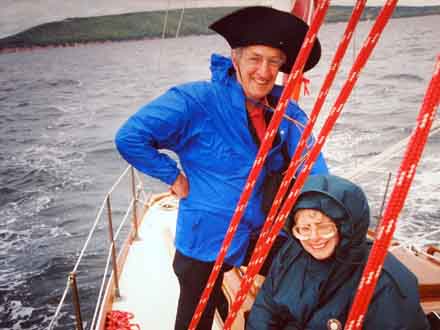
Yes, I look like some stupid drunken sailor, but for the afternoon, with fresh wind, it was a very pleasurable reminder of the pre-stroke days.
The course set by our skipper sailed past Bell's mansion, a most impressive place which also houses an interesting museum dedicated to the work and inventions of Bell.
This is lobster country throughout the Provinces, and the signs of that industry fill many of the villages in the area. We passed one such place (French Cove), which provided an interesting precursor for a post- sail dinner.
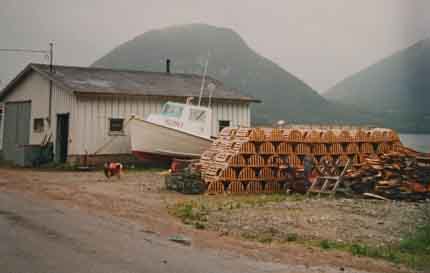
Coming off the Elsie, we walked the short distance from the dock to a local restaurant where we were treated to- what else- a spectacular all-you-can-eat fresh lobster feast! Nancy stopped just long enough for me to snap this shot.

There is a great deal to explore in the Maritimes. The population is small, the people helpful and friendly to a fault. If you have the time, we suggest you allow yourself an extra day or two to do it justice. Don't worry about being disabled. They will take good care of you here. |
